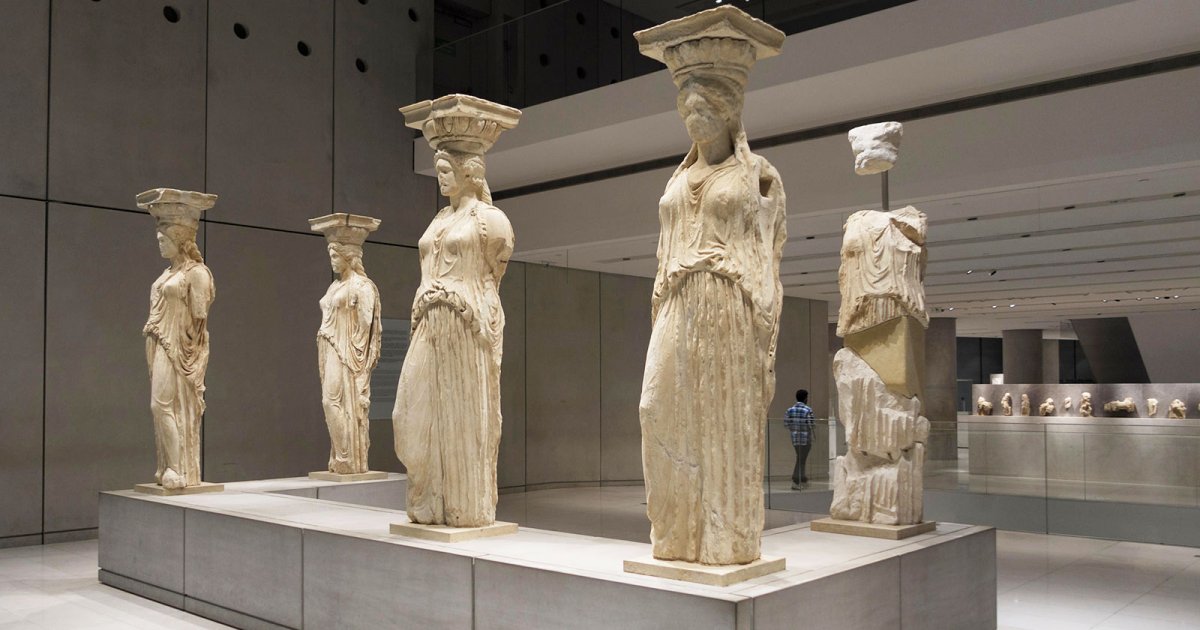ACROPOLIS MUSEUM, First Floor Athena Nike And Caryatids
 Language: English / USA
Language: English / USA
The winged statues that formed the parapet of the small temple of Athena Nike, meaning victorious Athena, which you can see here in the museum, date to around 410 BC. This parapet, which formed a barrier between the temple and the edge of the rock bastion of the Acropolis, was 41 meters long and was composed of numerous tablets, each one portraying a version of winged Athena.
The tablets did not tell a story; each scene was independent from the others. The winged goddess is portrayed leading a bull to sacrifice, or seated, showing weapons and trophies wrested from Persian enemies. One of the most unusual scenes shows Athena intent on carrying out an everyday task: fastening her sandal.
You’ll also notice fragments of the frieze that ran along all four sides of the small temple, measuring almost 26 meters and consisting of 14 sections. Many parts have been lost, and four blocks can be seen in the British Museum. The east frieze shows the gods of Mount Olympus, while the other three feature scenes from historical battles, such as the Battle of Marathon in 490 BC.
Now press pause and move on to the Caryatids.
The Caryatids are the six female statues that supported the roof of the Erechtheion, another temple dedicated to Athena; they were the columns of one of the porticos. Here you can see just five of them, because the sixth is still in the British Museum. They date to 420 BC, and may have been crafted by the famous sculptor Alkamenes, a pupil of Phidias. They are wearing loose garments, with folds reminiscent of the flutes of the columns, and the baskets on their heads form the capitals. Below them was the tomb of Kekrops, a legendary king of Athens. The name Caryatids was attributed to the columns later; as we can see from an inscription on the temple, they were originally called “Korai”, or maidens. There are several explanations for the name: one theory is that it refers to the inhabitants of the ancient Greek city of Karya, enslaved by the Greeks because they had helped their Persian enemies; another theory is that they were chosen because they were talented dancers and singers.
An interesting fact: if you’ve been thinking the statues of the winged figures you saw earlier looked familiar, that’s because they were used as a model for Christian artists to depict angels.



